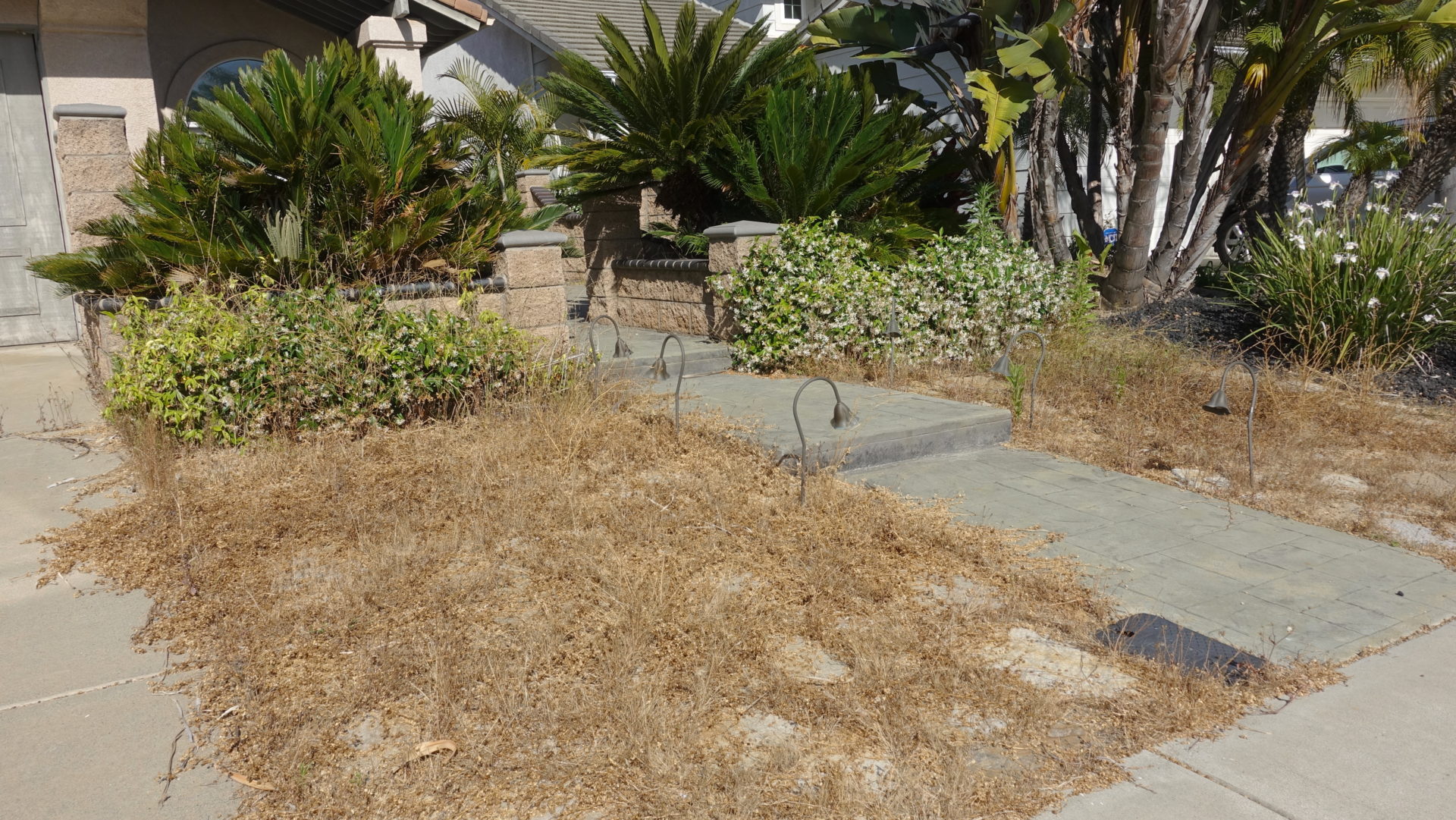
By Jim Connolly
This past Tuesday I was filling in for Trevor as the “Ask the Expert” on Zoom and many people had questions about what they should be doing with their lawns at this time of the year. As we all know, many cities and towns implemented watering bans so most people have just stopped watering their lawns altogether. Now, the lawns are sandy brown and dry as hay and people want to know what is the best course of action.
Well, hopefully, you were the recipient of some the well-needed natural rain fall we just experienced. Some locations in Massachusetts received over 5” of rain and others had a minimal amount. The days after the rain event have been warm and humid and even with all that rain, much of the moisture has evaporated out of the soil. In order for the lawn to recover from the drought, it will need cooler weather in combination with regular irrigation. Fertilizing a brown lawn won’t do any good. The lawn has to be actively growing for the fertilizer to work.
Most lawns have 2 to 4 types of grass plants – Kentucky bluegrass, Creeping Fescue, Perennial Rye and Black Beauty® Tall Fescue. Bluegrass grows well with cool temperatures and moisture which is why it is successful in spring and fall. The advantage of planting Bluegrass is how it grows underground tillers which will fill in bare spots in your lawn much more quickly than the other types of grass plants. Creeping Fescue is similar and can take some dry conditions, but not when we get a drought like we’ve had this year. Fescue also does well in shade or sun in contrast to Bluegrass which really prefers full sun. Perennial Rye is in most seed mixes because it germinates faster than Bluegrass and Fescue. Many of the Contractor Blends have higher percentages of Rye in them for that reason. Rye can also tolerate warmer conditions but not to the extreme as we have had this year. The best seed for tolerating a drier summer is the Black Beauty® Tall Fescue. The root system, once established, can grow so much deeper in the soil which then prevents the plant from drying out as quickly as the other grass plants. However, this year, I have even seen lawns with higher percentages of Black Beauty® going dormant due to the drought and the heat. If you had a lawn with Black Beauty® Tall Fescue and had moderately watered it this summer, it may be sustainable. Most seed blends have a composition of at 3 of these types of plants.
The drought this summer has caused the grass plants to go into hibernation which is also called “summer dormancy”. Cool weather and adequate moisture in the fall will “wake” the lawn right up! Every lawn is different, even in different parts of your yard. A lawn with a healthy soil will respond better than an unhealthy soil. The million dollar question is “will my lawn recover once the conditions are perfect and come wake up from its dormancy?” The answer is hopefully yes, it will; but how much it will recover is to be determined. Because of the extended warm conditions some lawns will come back slower or possibly not at all. If you have Black Beauty® Tall Fescue in your lawn it should recover much quicker. The health of the soil will also dictate the speed of recovery.
The long-range forecast is showing cooler temperatures coming in with periods of rain in the coming weeks. Once the lawn starts “greening-up’ you can then access what to do next. If more than 50% of the lawn comes back, I would recommend Aerating, Power Thatching or Slice Seeding the lawn. After that, I would strongly encourage applying to the surface an organic treatment of Weston Best Compost or apply an organic fertilizer like Milorganite or Espoma Lawn Food Summer Revitalizer. If you want to apply the compost, make sure it is not covering the grass plants too much and it is closer to the soil surface. It is a good idea to scratch the compost into the ground with a rake after applying it. Water the compost or fertilizer into the ground at least twice the week after it is applied. The following week, after cutting the lawn, I would then over-seed with one of the Jonathan Green Grass Seed Blends, all of them contain Black Beauty seed.
Now, let’s say only 25% of the lawn recovered then I would suggest just starting from scratch. Here is a link for more information on how to do that. https://www.westonnurseries.com/fall-lawn-care-101/
Another question that came up on the “Ask the Expert” night was about crabgrass. If your lawn has a lot of crabgrass I recommend applying Bonide Kleen-up to kill it and in 7-14 days you can seed the area. Another option (if you prefer not to spray) is to use hand removal or to rent a sod-cutting machine and strip it away. Follow the guidelines for starting a lawn by seed if you want to refer to our website link above. You should try to remove as much of the crabgrass you have before seeding.
Please feel free to email me at jimc@westonnurseries.com or call the store at 978-749-3773 if you have more questions, I am always happy to help.
Good luck with your lawns!
Jim Connolly, MCH, MCLP is the Weston Nurseries Garden Center Manager at our Chelmsford Facility.







